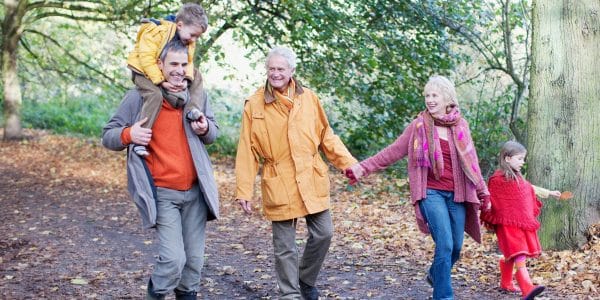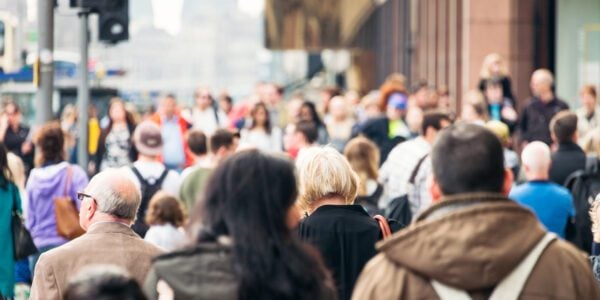
08/10/20
3 min read
Hopes of a V-shaped recovery have given way to the reality of a U-shaped crisis, with young adults and young pensioners most likely to have stopped working during the pandemic, according to the Resolution Foundation’s Nuffield-funded annual Intergenerational Audit.
The report offers the first comprehensive assessment of the initial phase of the coronavirus crisis for different generations in Britain, from people’s mental health and well-being, to their jobs, pay, living conditions, wealth, spending patterns and household incomes.
The report notes that the starkest impact of COVID-19 has been on mortality, which has overwhelmingly fallen on older generations.
However, young adults and young pensioners have experienced the biggest deterioration in their mental health during the crisis so far, which the report says is likely to reflect the wider economic and social impacts of the pandemic.
For example, the proportion of adults experiencing poor mental health has increased by 80 per cent among 18-29-year olds during the pandemic (compared to 2017-2019) and by 68% among those aged 65-79.
A similar U-shaped pattern emerges when looking at the impact of the crisis on people’s jobs. Over half of those aged 18-24 and 65+ who were employed before the pandemic have since stopped working – either by being furloughed or by losing their jobs altogether – compared to fewer than a third of those aged 30-50.
The U-shape of this jobs crisis reflects the fact that young and older workers are heavily concentrated in social sectors of the economy that have been hit hardest by public health restrictions.
The Resolution Foundation warns that young and pension-age workers are most at risk during the next phase of the crisis, as furloughing ends and unemployment continues to rise. It notes that should the Office for Budget Responsibility’s projection for unemployment to reach 11.9% materialise, youth unemployment could rise to around 17% – the same level as the early 1980s peak.
But while the jobs crisis has affected young and old alike, the report shows that the impact of the crisis on people’s living conditions has fallen most heavily on young people. Around one-in-seven people under the age of 30 have missed a rent or mortgage since the pandemic began, compared to just one-in-thirty 60-69s.
Young people (aged 16-24) have also experienced lockdown living in housing with half as much space as those aged 65+ (26 square meters per person, compared to 50), with greater risks of damp, no garden access – and now eviction.
Finally, the report notes that while generations have had very different experiences of the covid crisis so far, Britain’s path out of the crisis rests on a strong living standards recovery for all age groups.
For younger generations, holding back rising unemployment by protecting jobs and supporting the creation of new jobs, including via direct public investment, will be vital to prevent losing a covid generation to long periods out of work.
For older generations too, the report notes that pensioners typically spend a bigger share of their income on activities that involve socialising, such as eating out, than any other age group.
Suppressing the virus would therefore encourage back the pre-pandemic boom in pensioners’ social spending – helping to rebuild Britain’s hospitality, retail and leisure sectors, and the jobs they provide for young adults and young pensioners.
David Willetts, President of the Resolution Foundation, said:
“The pandemic has already cost tens of thousands of lives, millions of people their livelihoods, and upended everyone’s daily lives. As hopes of a V-shaped recovery fade, our analysis reveals the reality is more of a U-shaped crisis, with young adults and young pensioners most likely to have stopped work or suffered mental health problems.
“For younger generations, this crisis has created wider problems. The growth of the high-cost, low-security private rental sector has led to missed housing payments and cramped living spaces during lockdown. It has also reinforced the underlying trends for younger people to have less wealth than young people did a generation ago, while increases in the value of houses and pensions particularly benefit older generations.
“With infections rising again, the covid crisis is sadly far from over. That means the risk of losing a covid generation to long-term youth unemployment is real. But there is plenty that policy makers can do to prevent it – from extra training provision to a greater focus on creating new jobs to support people out of this crisis.”
Alex Beer, Welfare Programme Head at the Nuffield Foundation said:
“While all generations are at risk of the social and economic impacts of the COVID-19 pandemic, this timely audit shows that alongside direct consequences on the mortality of those over the age of 45, younger and older workers are bearing the brunt of job insecurity and risks to their economic and wider well-being. It also highlights significant variation in experiences of the pandemic within age groups, including in the psychological well-being of renters and home owners, and the lack of access to outside space for children from black, Asian and minority ethnic backgrounds.
“As the crisis continues, this research suggests that it is crucial for the government to not only support incomes, but to also take a broader approach to building resilience and improving living standards. Access to housing, skills training and mental health support will also be crucial for those most at risk of the adverse effects of the pandemic.”






















































